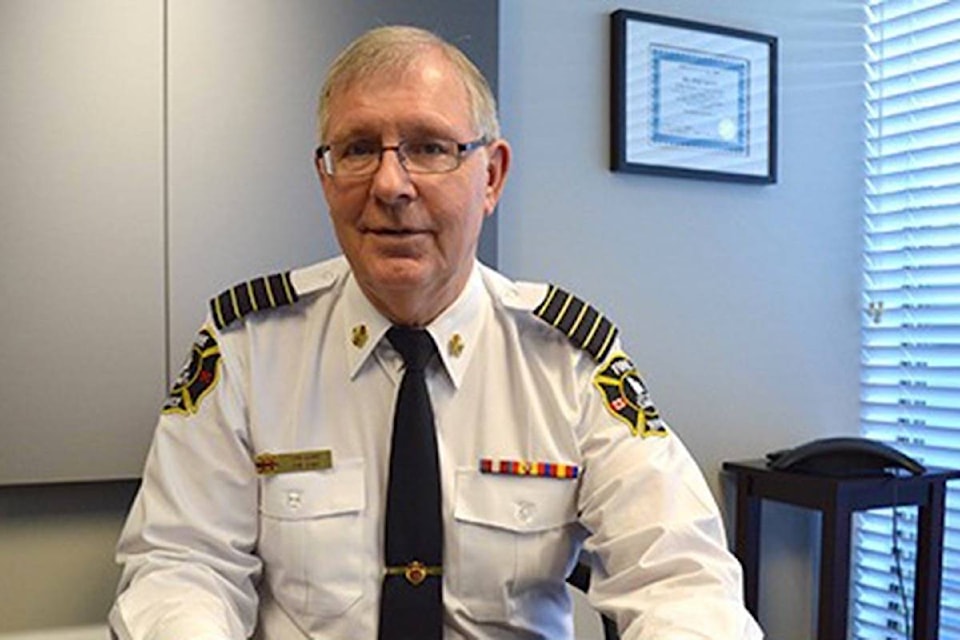Surrey Fire Chief Len Garis says a specialized team that’s been targeting “high risk” abandoned houses in this city since January has “significantly reduced the threat”of fire, unsightliness and squatting.
“At the same time, costs are directed back onto property owners as they are encouraged to take responsibility for their property,” Garis writes in a report entitled “Community Property Safety Team,” which he is expected to present to city council tonight (Monday night, Dec. 17).
“Neighbourhoods are restored while risk to the community, firefighters, police and bylaw officers is reduced,” he explains. “Finally, some homes are being returned to the low cost rental market that would otherwise be left in a state of declined. Detection methods are being developed to further manage the risk and move towards prevention.”
By way of background, Garis noted Surrey firefighters have over the past five years attended abandoned properties in Surrey 3,148 times and bylaw inspectors 680 times. “In spite of these efforts, property owners have not been effectively securing their properties and violations have continued unabated increasing the danger to residents, neighbours, and first responders,” he writes in his report.
The purpose of the report is to update council on the fire department’s Distressed Properties initiative and “related actions and outcomes” of the safety team, which consists of two fire inspectors and a support clerk.
READ ALSO: Surrey Fire Chief says ‘reverse engineering’ fatal OD victims will help tackle crisis
READ ALSO CANNABIS: Surrey Fire Chief says allowing people to grow pot at home is ‘wrong-headed’
READ ALSO: More parking spaces in Surrey if fire hydrant rule change approved
The initiative rose from a study, “Distressed Properties: Pathways of Decline and the Emergence of Public Safety Risk,” and, notes the fire chief, was developed to “identify residential properties tipping towards a state of distress and provide the city with measures to address problem properties before they decline further and incur risk of crime or fire.”
Garis reports that in recent years there’s been a growing number of abandoned homes that have been damaged by fire.
Abandoned properties, he says, are magnets for vandalism, property crime, drug use, squatting, and an assortment of other social ills including crack houses, marijuana grow operations, illegal rooming houses, and prostitution.
In January 2018 a strategy was put into practice, based on recommendations of the study, to make sure the owners of abandoned properties take responsibility for them. If they decline to take action, they’re on the hook for costs related to inspection, fencing off and boarding up their property and if they don’t pay up, the bill is applied to their property taxes for collection.
Since January the CPST recovered $114,000 through re-inspection fees and $525,000 was spent securing non-compliant properties with these costs being applied to the property owners, Garis reports.
“The model is highly successful,” Garis writes. He said Surrey over the past five years has seen on average two abandoned structures monthly but since this program started the rate has steadily decreased and since June there has only been one abandoned structure fire.”
At the end of 2017, the Surrey fire department identified 194 vacant and abandoned properties and since January 2018 the CPST identified another 209 “distressed” properties, bringing the total to 403.
“When faced with the requirement to provide ongoing security,” Garis noted, “owners elected to demolish the structures on 191 of these properties, thereby removing the fire risk at these locations.
“By enforcing appropriate securing methods, the CPST has minimized the risk at 134 properties,” he added, and “fifty properties have been returned from distressed to inhabited having been repaired of renovated.”
The remaining 28 “distressed” properties, Garis notes, are in the process of either being demolished, secured or reinvested “within the next month.”
tom.zytaruk@surreynowleader.com
Like us on Facebook Follow us on Instagram and follow Tom on Twitter
